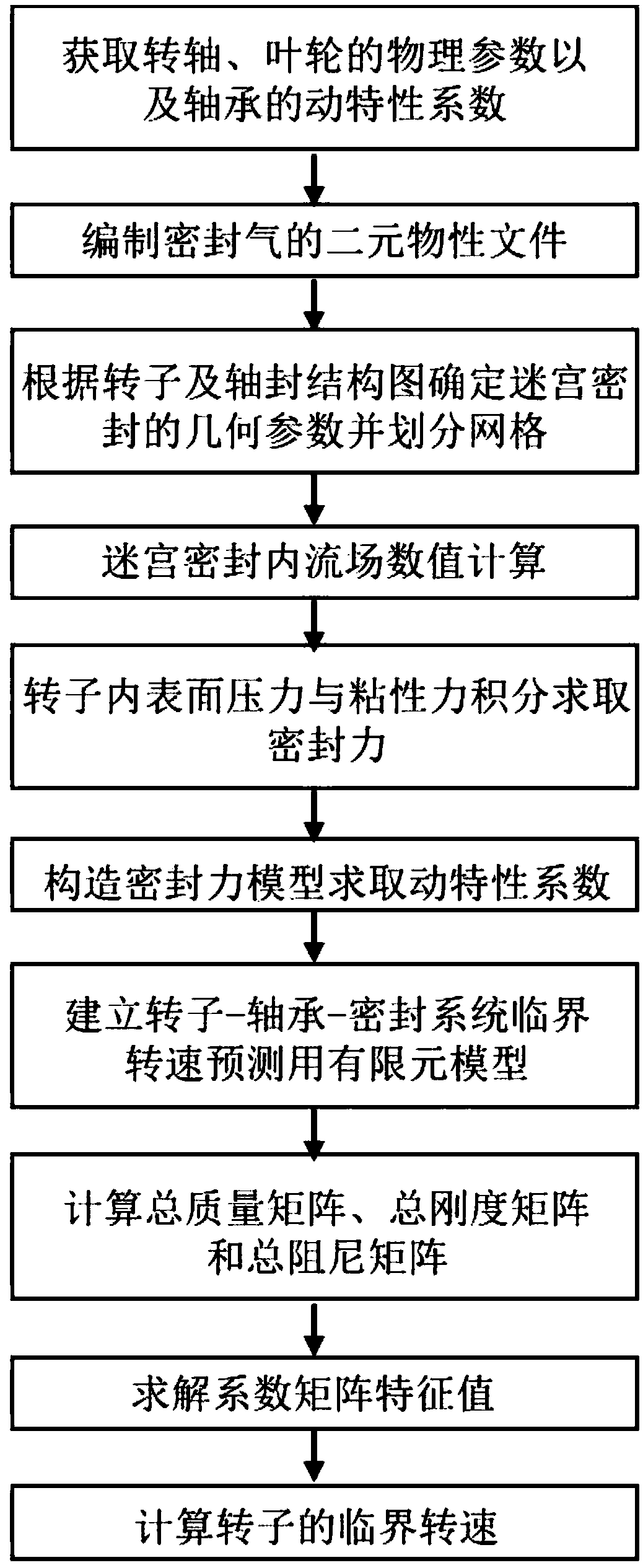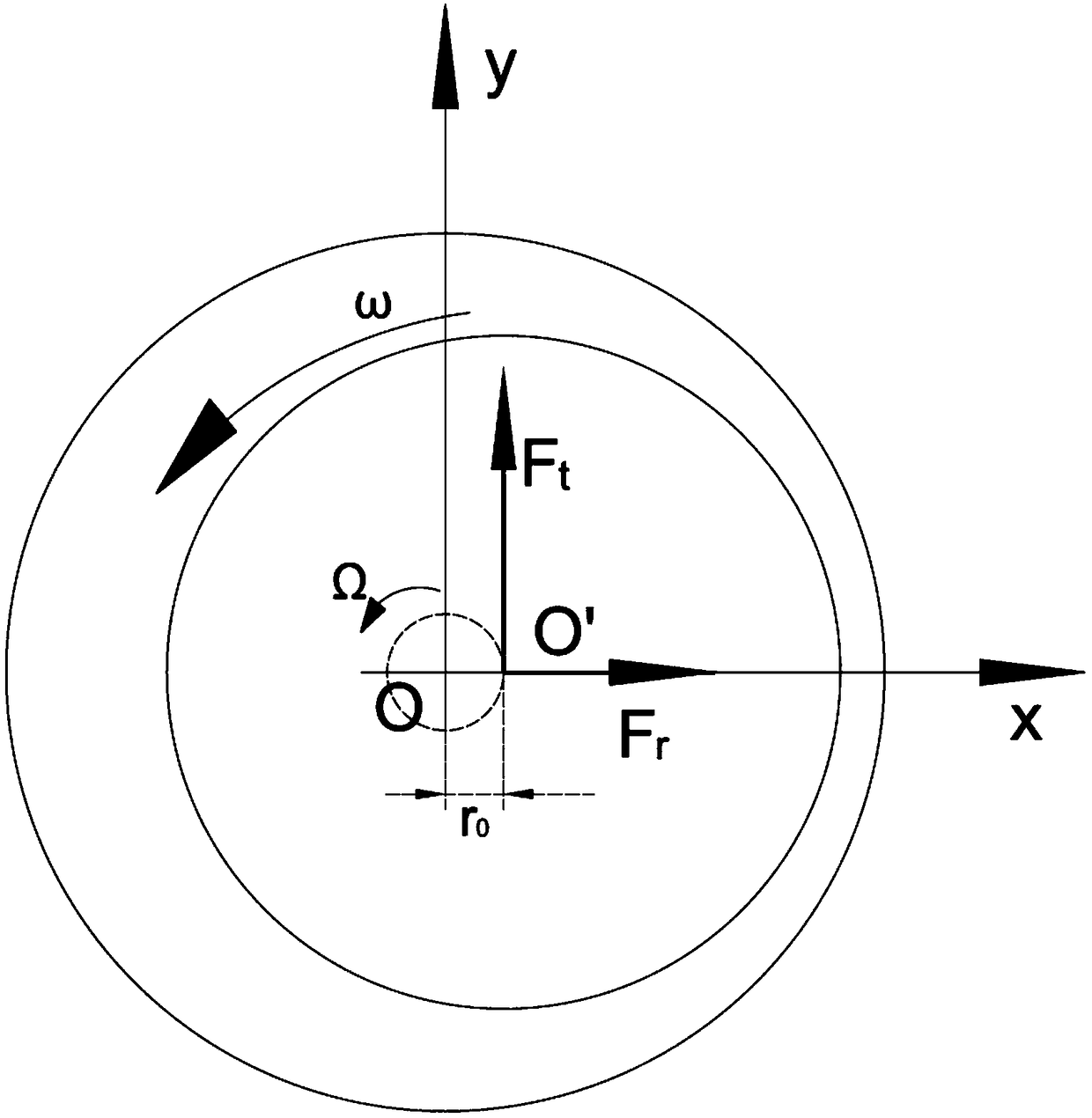Critical speed prediction method of cryogenic liquid expander rotor considering influence of sealing force
A low-temperature liquid, critical speed technology, applied in computer-aided design, special data processing applications, instruments, etc., to achieve the effects of avoiding resonance, important engineering practical value, and improving accuracy
- Summary
- Abstract
- Description
- Claims
- Application Information
AI Technical Summary
Problems solved by technology
Method used
Image
Examples
Embodiment Construction
[0057] The present invention will be further described below in conjunction with examples: the examples described in the present invention are illustrative, and are not intended to limit the protection scope of the present invention. All equivalent changes made by those skilled in the art on the basis of the technical solution of the present invention are also within the scope of patent protection of the present invention.
[0058] The specific embodiments of the present invention will be further described below in conjunction with the accompanying drawings.
[0059] see figure 1 , a method for predicting the critical speed of the rotor of a low-temperature liquid expander considering the influence of sealing force, including analyzing and obtaining the relevant physical parameters of the rotor and bearing of the liquid expander, using the eddy rotor method to simulate the flow field in the labyrinth seal, calculating the sealing force, sealing dynamics Calculation of charact...
PUM
 Login to View More
Login to View More Abstract
Description
Claims
Application Information
 Login to View More
Login to View More - R&D
- Intellectual Property
- Life Sciences
- Materials
- Tech Scout
- Unparalleled Data Quality
- Higher Quality Content
- 60% Fewer Hallucinations
Browse by: Latest US Patents, China's latest patents, Technical Efficacy Thesaurus, Application Domain, Technology Topic, Popular Technical Reports.
© 2025 PatSnap. All rights reserved.Legal|Privacy policy|Modern Slavery Act Transparency Statement|Sitemap|About US| Contact US: help@patsnap.com



